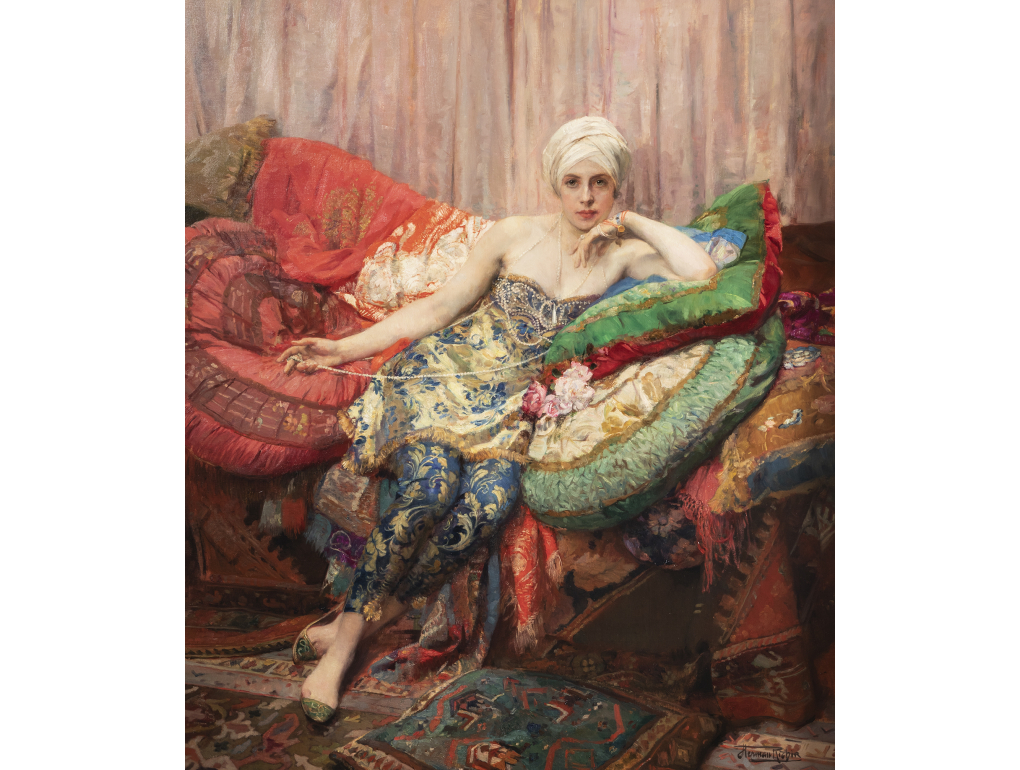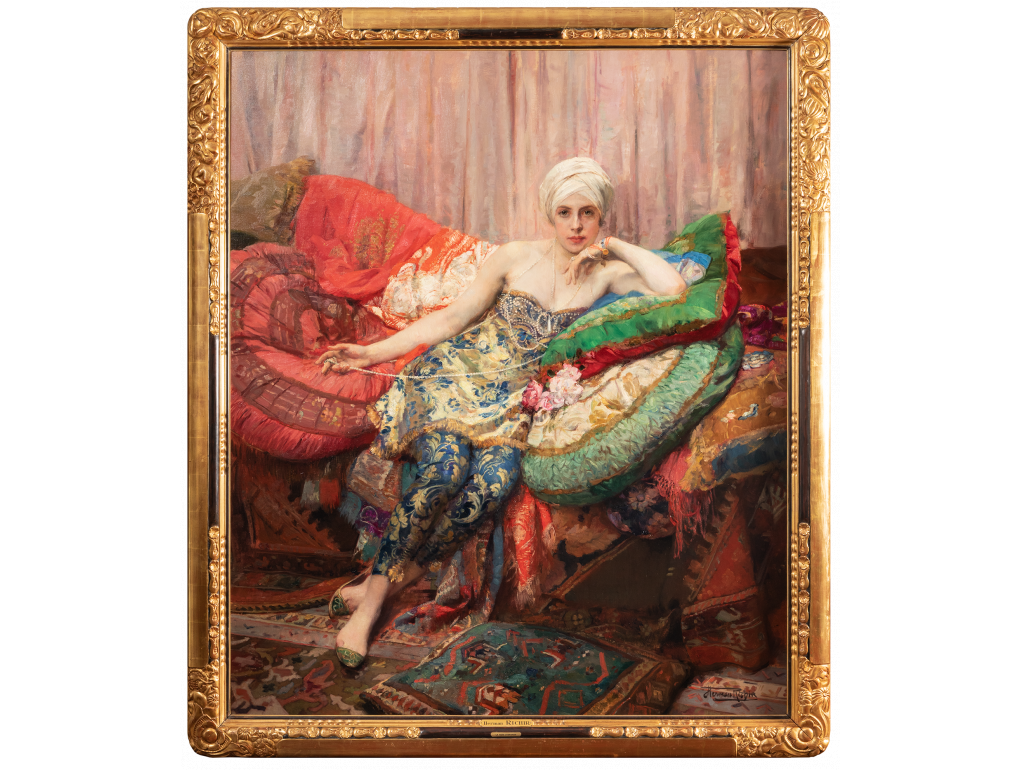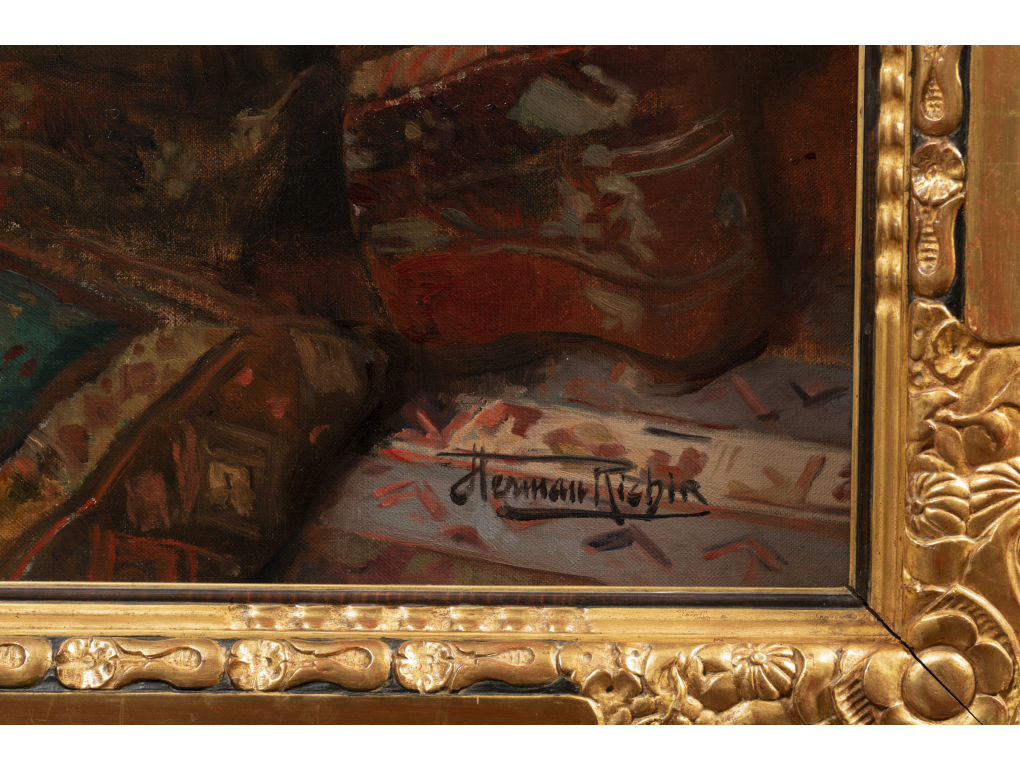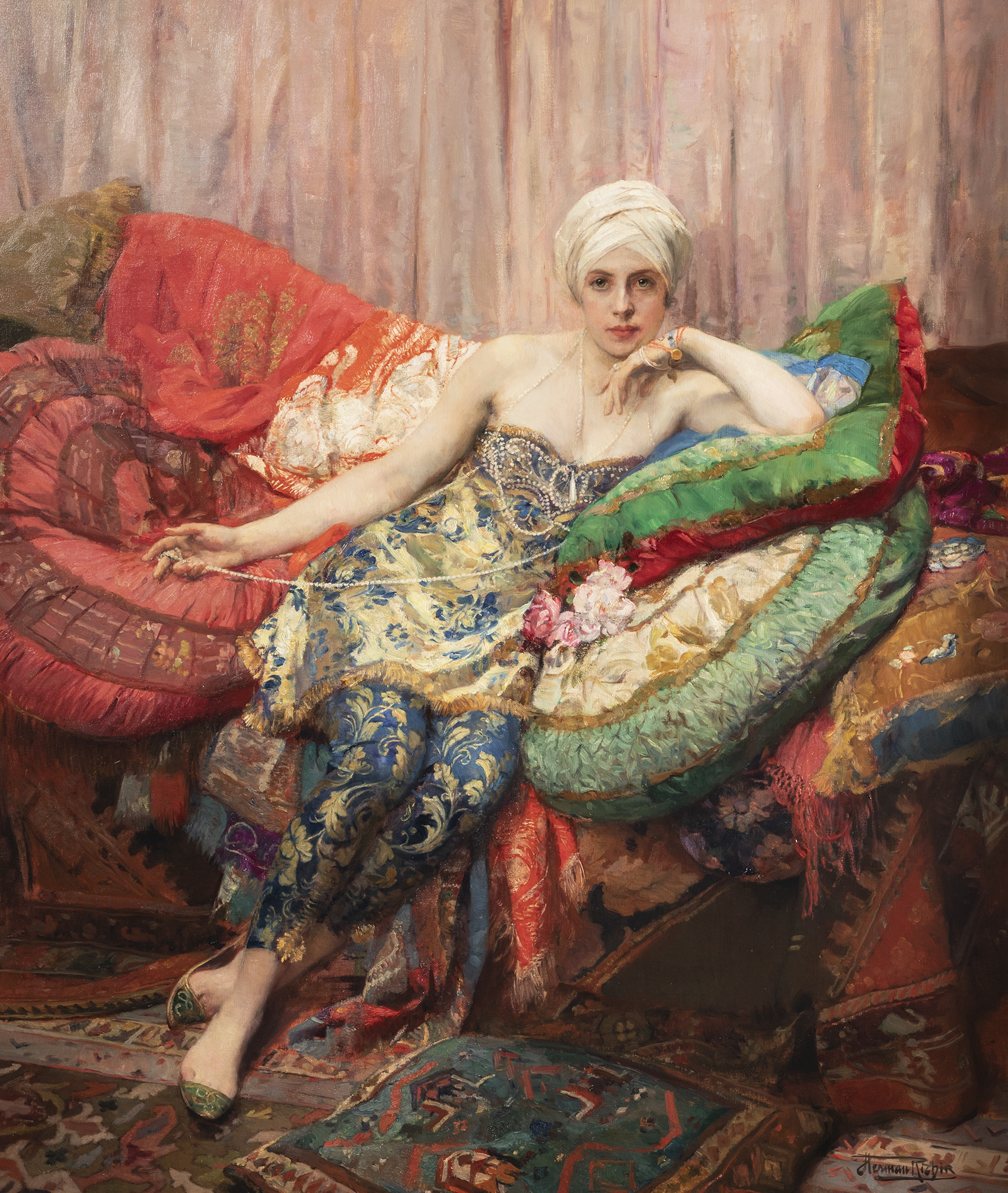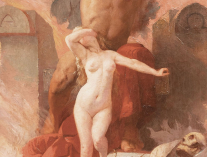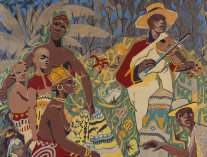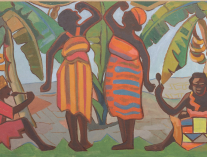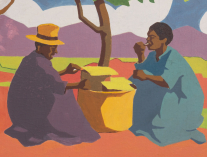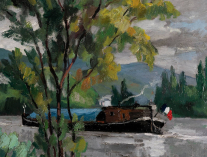Richir Herman Jean Joseph
The Rose of Isfahan
oil on original canvas signed lower left: « Herman Richir »
Title inscribed on the back of the canvas: « Rose d’Ispahan par Herman Richir »
Rose of Isfahan, embodied by the bewitching female figure sitting on a couch made of colorful oriental fabrics, bears witness to the colorist talent of Herman Richir, the renowned portrait painter of the Belgian bourgeoisie of the 20th Century. It represents the artist’s idea of oriental beauty through the features of a woman whose identity remains as mysterious as her dazzling portrait.Read more
The painting was exhibited three times : first in December 1925 at the very elitist Cercle Artistique et Littéraire of Bruxelles, the following year in Paris at the Salon de la Société Nationale des Beaux-Arts, and finally at the Petite Galerie de Bruxelles. The painting Rose of Isfahan belongs to the most prolific period in Herman Richir’s artistic career.
Described as the queen of flowers, the rose of Isfahan is rare and still known for its fragrant qualities since the end of the 16th Century. It has given Isfahan its reputation as the "City of Roses" or the "Rose of the East". The painter plays with the metaphor of the flower-woman. Wrapped in ribbons and pearls, dressed in bright silks, the sitter is painted in a shimmering display of striking colors. The title refers to the mythical East in many ways: visually, literary and musically. It is indeed an artistic representation of a dreamed Orient, inherited from the western image composed by artists to delight their contemporaries. The fragrant essence of the Isfahan roses inspired earlier on the French poet Charles-Marie Leconte de Lisle, and the composer Gabriel Fauré (Les roses d'Ispahan. Opus 39, N° 4).
Private collection, France
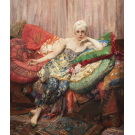
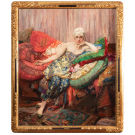
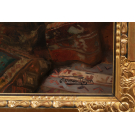
Our artwork available
93400 Saint-Ouen sur Seine
